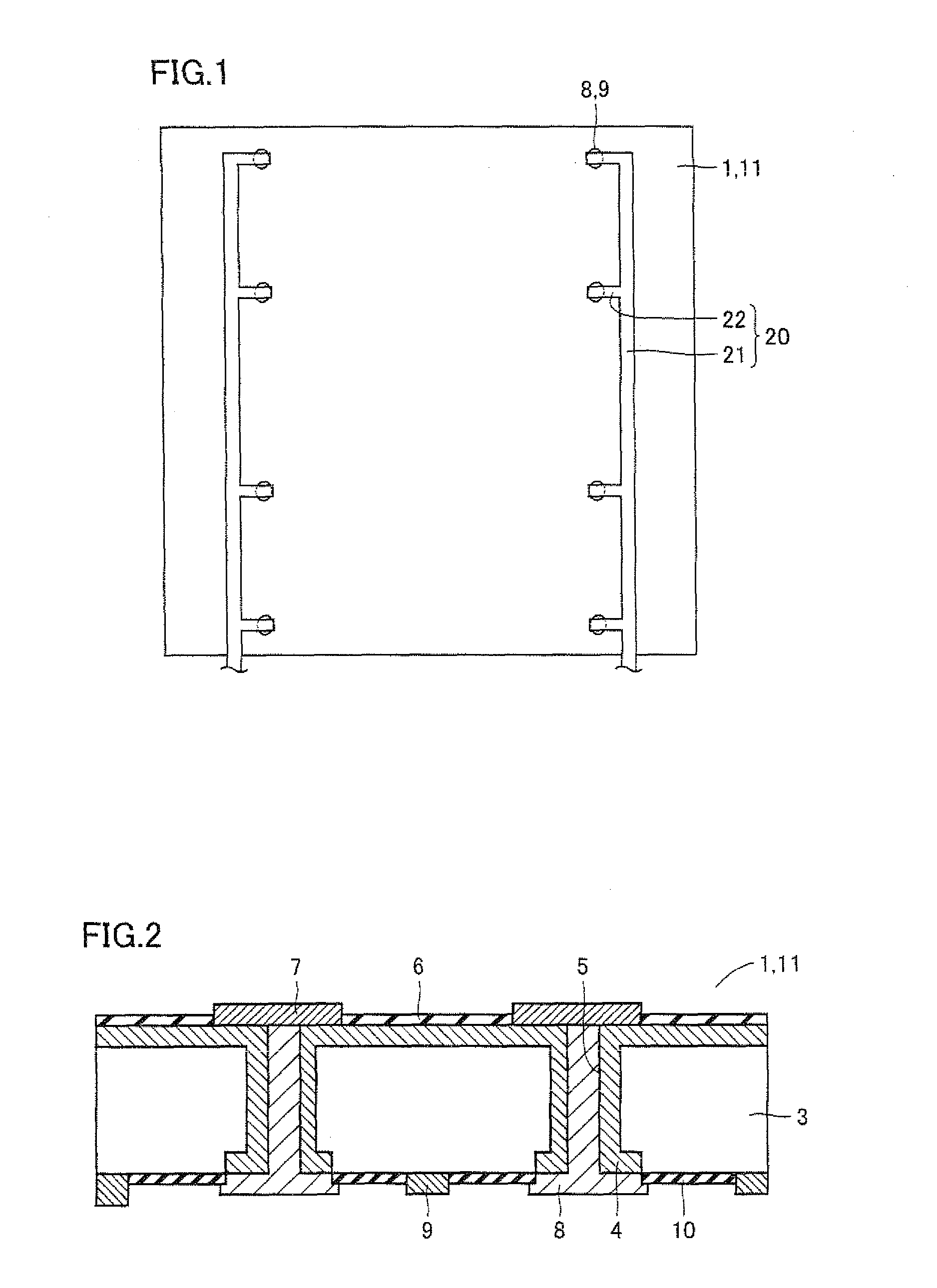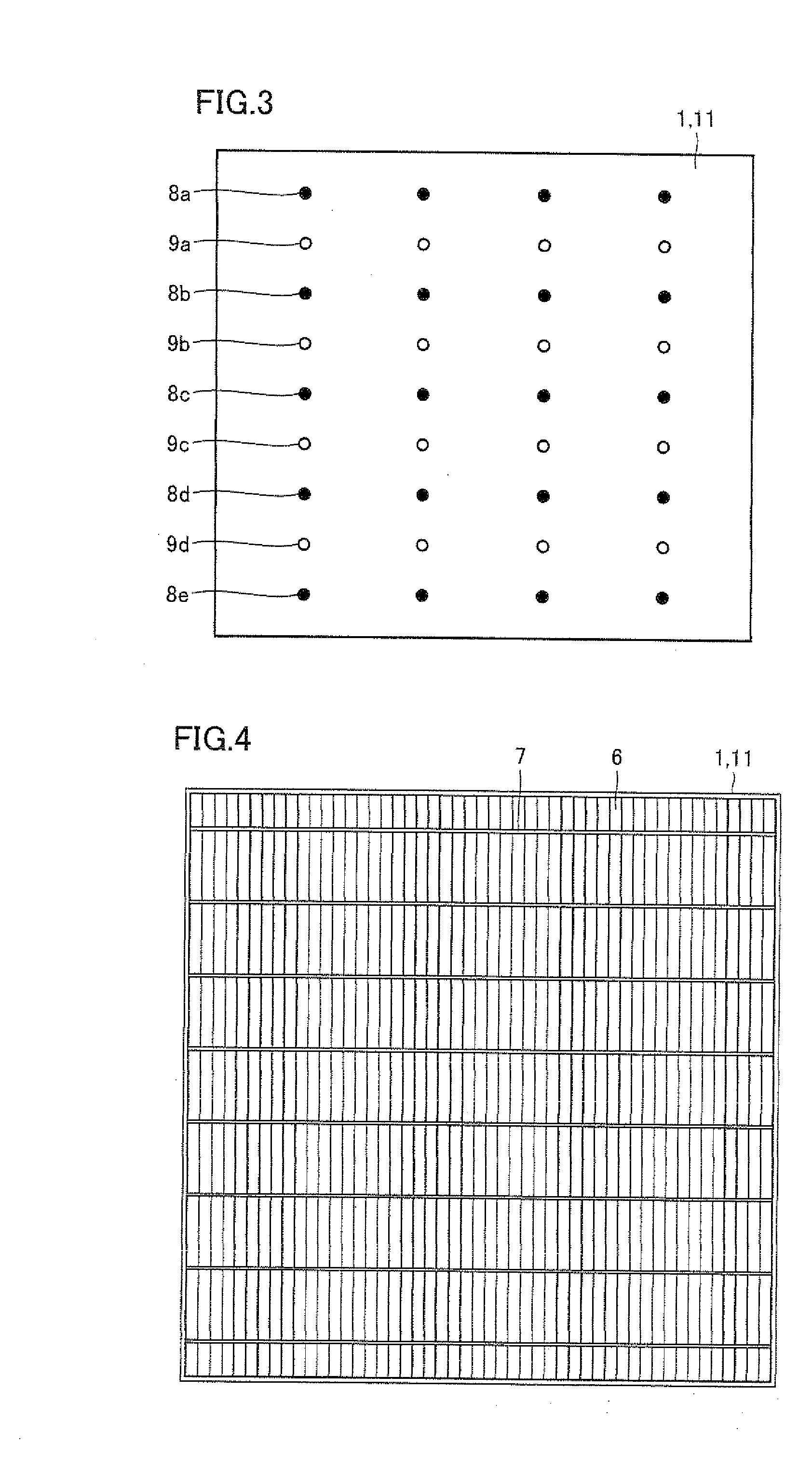Element interconnection member, photoelectric conversion element and a series of photoelectric conversion elements including the same, and photoelectric conversion module
a technology of photoelectric conversion elements and interconnection members, which is applied in the direction of printed circuit details, power plants, semiconductor devices, etc., can solve the problems of poor contact, disadvantageous assembly, and inability to ensure the contact of an interconnection pattern to all electrodes to be connected, etc., and achieve poor electrical connection and poor electrical connection
- Summary
- Abstract
- Description
- Claims
- Application Information
AI Technical Summary
Benefits of technology
Problems solved by technology
Method used
Image
Examples
first embodiment
[0083]Initially, a basic structure of an interconnector (an element interconnection member) according to an embodiment of the present invention will be described. As shown in FIG. 1, an interconnector 20 includes an extending portion 21 extending in one direction and a connection portion 22 fixed to an n electrode 8 or a p electrode 9 formed on a cell substrate (a photoelectric conversion substrate) 11 of a photoelectric conversion element 1 for connection to these electrodes 8, 9. This one direction is based on a direction in which cell substrates 11 are arranged or a direction in which electrodes 8 and 9 are arranged. Connection portion 22 is formed in a comb shape so as to protrude from extending portion 21 in a direction substantially orthogonal to that one direction. Though extending portion 21 comes in contact with cell substrate 11, it is not fixed to cell substrate 11.
[0084]As will be described later, by not fixing extending portion 21 of interconnector 20 to cell substrate ...
second embodiment
[0144]Here, a photoelectric conversion module including the series of photoelectric conversion elements described previously will be described, As shown in FIG. 45, in a photoelectric conversion module 30, the series of photoelectric conversion elements 12 is sealed with a sealing material 32 composed of EVA (Ethylene Vinyl Acetate) resin. Sealing material 32 sealing the series of photoelectric conversion elements 12 is sandwiched between a glass plate 33 serving as a surface protection layer and a back film 31. One external terminal 35a and the other external terminal 35b of the series of photoelectric conversion elements 12 are taken out of back film 31. In addition, a frame 34 formed of an aluminum frame is attached to surround glass plate 33, sealing material 32 and back film 31 from an outer side.
[0145]An exemplary method of manufacturing photoelectric conversion module 30 will now briefly be described. Initially, the series of photoelectric conversion elements 12 is sandwiched...
PUM
 Login to View More
Login to View More Abstract
Description
Claims
Application Information
 Login to View More
Login to View More - R&D
- Intellectual Property
- Life Sciences
- Materials
- Tech Scout
- Unparalleled Data Quality
- Higher Quality Content
- 60% Fewer Hallucinations
Browse by: Latest US Patents, China's latest patents, Technical Efficacy Thesaurus, Application Domain, Technology Topic, Popular Technical Reports.
© 2025 PatSnap. All rights reserved.Legal|Privacy policy|Modern Slavery Act Transparency Statement|Sitemap|About US| Contact US: help@patsnap.com



